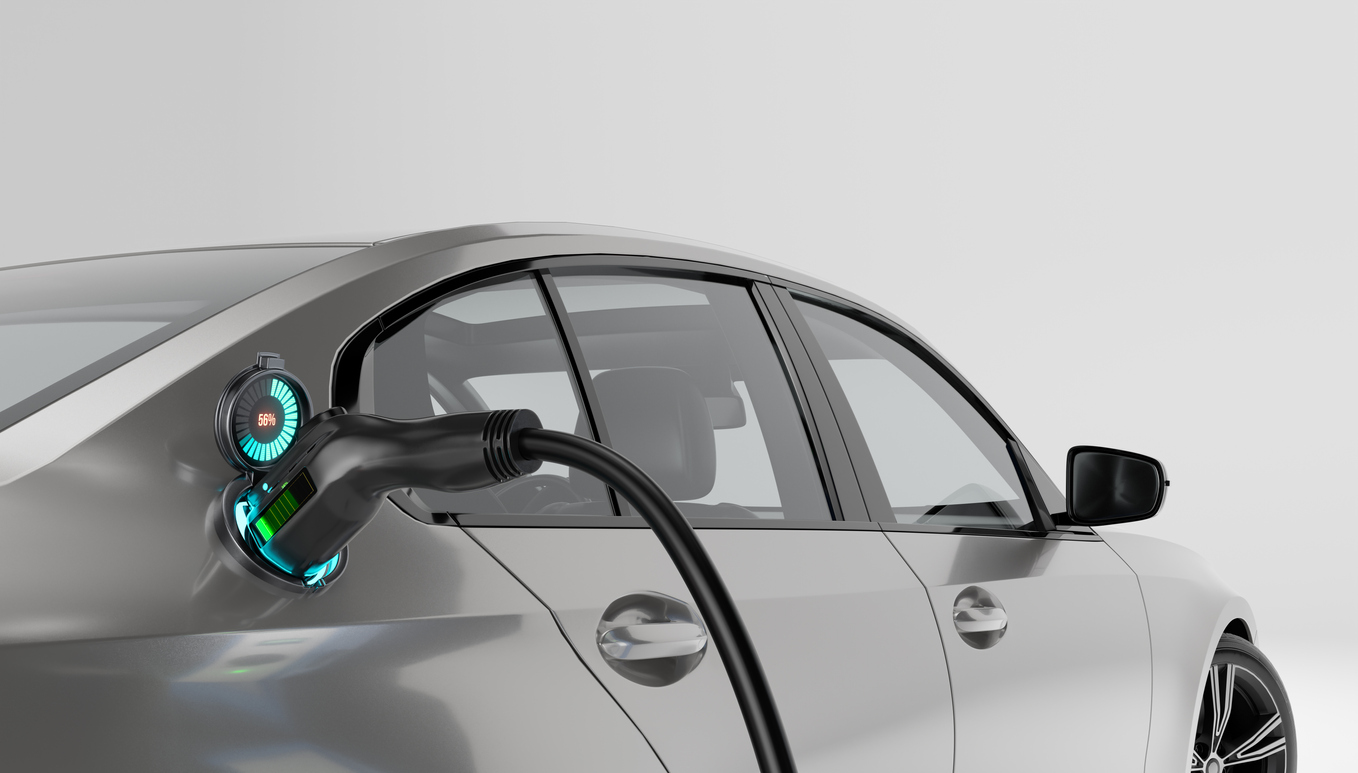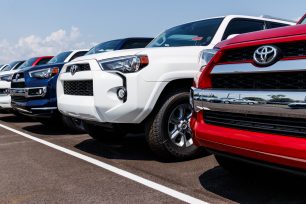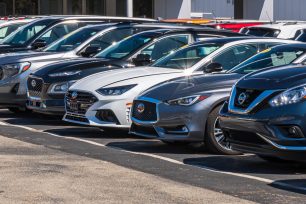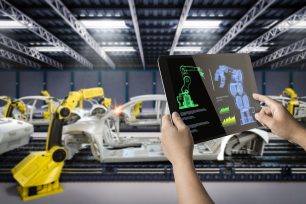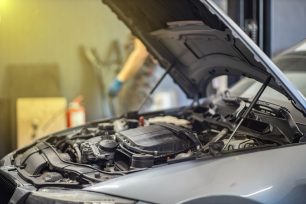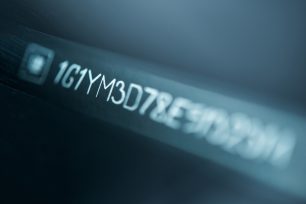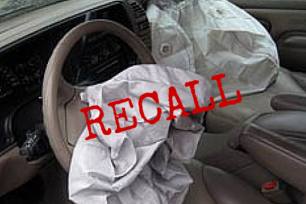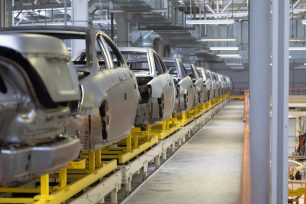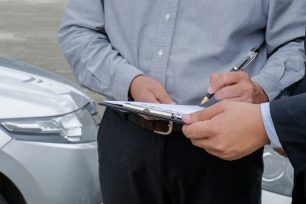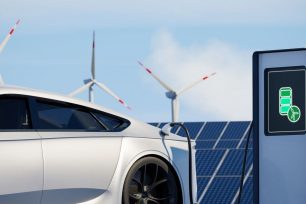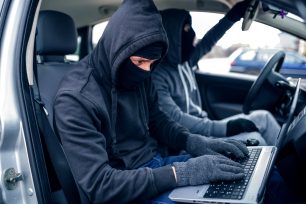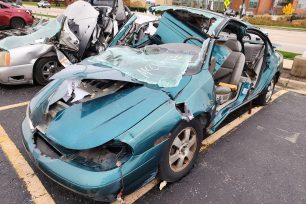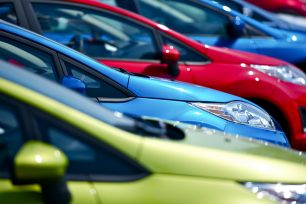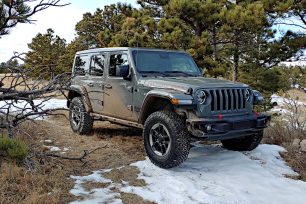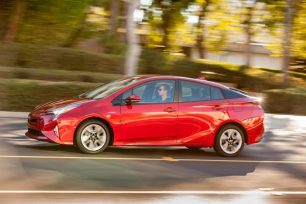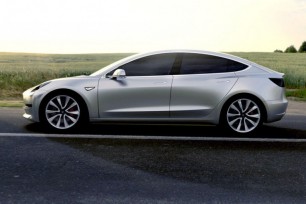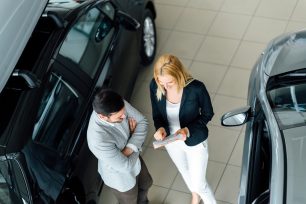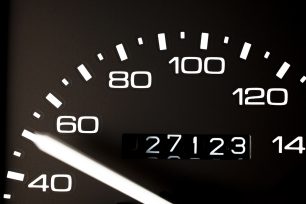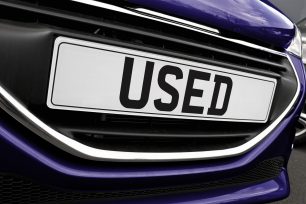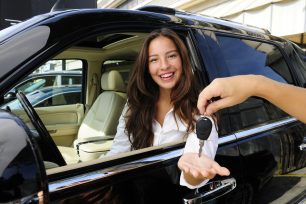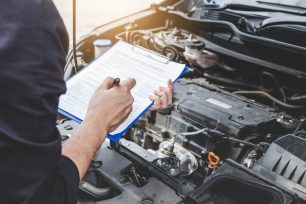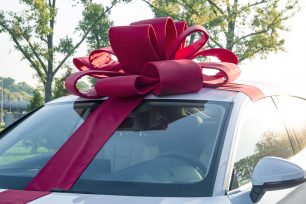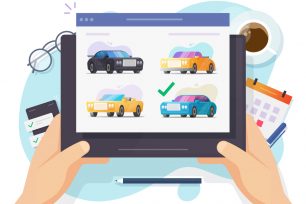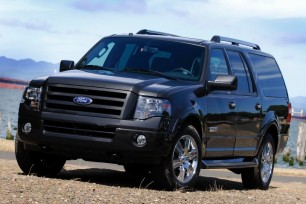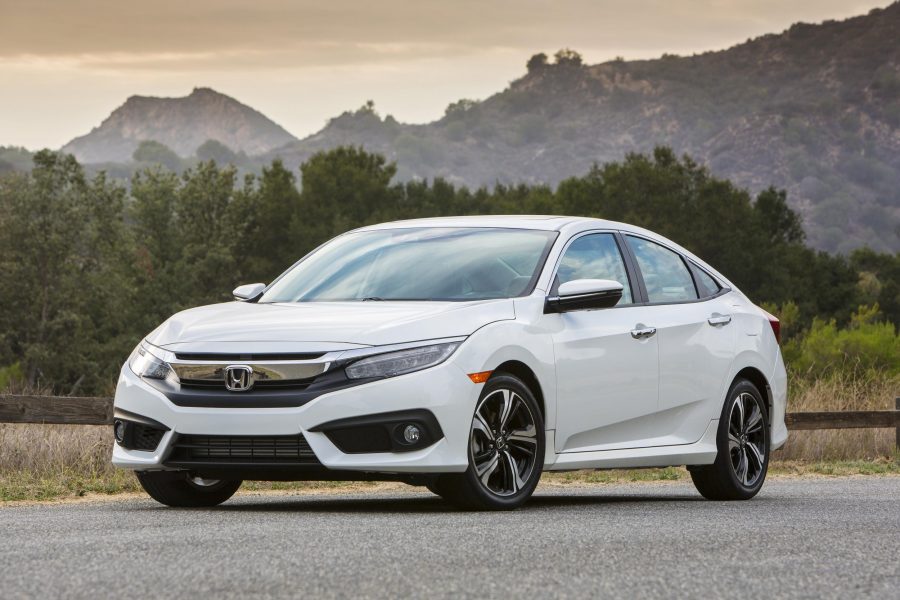Electric vehicles are projected to grow from 6 percent to 30 percent of new vehicle sales in the next 6 years. A 500-percent spike in EV sales will require a similar rise in electric vehicle infrastructure if all these new EV owners want access to quick and convenient public charging.
While there are already 150,000 EV charging stations in the U.S., most of them are Level 2 chargers that only add about 10-20 miles an hour to an electric vehicle’s range. Level 3 fast chargers can add 3-20 miles or range a minute, completely replenishing most electric vehicles in 30-60 minutes. However, with only 28,000 Level 3 fast chargers in the public infrastructure, access to fast charging is limited.
Of those 28,000 fast chargers, over 17,000 are part of the Tesla Supercharger Network, leaving only 11,000 Level 3 chargers available for non-Tesla drivers. You can see which cities are the most and least EV friendly in our recent EV charger study, but suffice it to say the country needs rapid growth in electric vehicle charging support, particularly fast charging options, to keep pace with rising EV sales.
Which Cities and States Have Grown the Fastest in EV Infrastructure?
EV owners and potential buyers should consider not only which cities and states have the best current EV infrastructure, but which areas are seeing the fastest growth. Many of these cities and states don’t have big EV charger numbers today, but they have worked the hardest in recent years to prepare for the coming wave of electric vehicles.Listed below are the cities and states with the fastest growth in the number of EV chargers over the past 5 years. These tables show total EV charger growth as well as the growth of Level 3 chargers.
Tables showing growth for all EV charging networks and growth for Tesla’s Supercharger Network are also included.
Top Cities and States for Total EV Charger Growth
Much of the recent growth in EV infrastructure has occurred in California, but the fastest growth over the past 5 years has been in Oklahoma City. At the state level, North Dakota has improved the most over the past 5 years, with Massachusetts and Oklahoma coming in second and third.| Top 10 Metro Areas with the Most Growth in Total Chargers (incl. Tesla Network), 2017 - 2022 - iSeeCars Study | ||||
| Rank | Metro | % Improvement | Residents per Charger, 2017 | Residents per Charger, 2022 |
| 1 | Oklahoma City, OK | 89.1% | 29,100 | 3,164 |
| 2 | San Francisco-Oakland-San Jose, CA | 88.2% | 3,941 | 465 |
| 3 | Fresno-Visalia, CA | 88.1% | 8,632 | 1,024 |
| 4 | Austin, TX | 87.7% | 10,672 | 1,310 |
| 5 | San Diego, CA | 87.6% | 6,636 | 824 |
| 6 | Boston, MA-Manchester, NH | 87.4% | 8,807 | 1,111 |
| 7 | Grand Rapids-Kalamazoo, MI | 87.3% | 23,307 | 2,965 |
| 8 | Cincinnati, OH | 87.1% | 26,899 | 3,465 |
| 9 | Harrisburg-Lancaster-York, PA | 86.1% | 24,082 | 3,351 |
| 10 | San Antonio, TX | 85.6% | 37,468 | 5,386 |
| National Average | 79.6% | 11,177 | 2,280 | |
| Top 10 States with the Most Growth in Total Chargers (incl. Tesla Network), 2017 - 2022 - iSeeCars Study | ||||
| Rank | State | % Improvement | Residents per Charger, 2017 | Residents per Charger, 2022 |
| 1 | North Dakota | 94.5% | 83,882 | 4,611 |
| 2 | Massachusetts | 90.1% | 11,827 | 1,167 |
| 3 | Oklahoma | 87.6% | 30,010 | 3,729 |
| 4 | Rhode Island | 87.1% | 11,351 | 1,462 |
| 5 | New Jersey | 87.1% | 25,030 | 3,228 |
| 6 | New York | 86.8% | 14,773 | 1,950 |
| 7 | Alaska | 86.0% | 46,231 | 6,492 |
| 8 | Utah | 84.4% | 11,528 | 1,802 |
| 9 | Michigan | 83.9% | 22,980 | 3,704 |
| 10 | California | 83.4% | 5,315 | 881 |
| National Average | 79.6% | 11,177 | 2,280 | |
Top Cities and States for Level 3 Fast Charger Growth
While a Level 2 charger is better than nothing for an EV about to run out of energy, effective midday charging requires a Level 3 fast charger. West Palm Beach has grown the fastest in Level 3 charging over the past 5 years, with San Antonio and Cincinnati also showing substantial improvement. Oklahoma, Massachusetts, and Florida are the leading states for Level 3 improvements in charging support.| Top 10 Metro Areas with the Most Growth in Fast Chargers (incl. Tesla Network), 2017 - 2022 - iSeeCars Study | ||||
| Rank | Metro | % Improvement | Residents per Fast Charger, 2017 | Residents per Fast Charger, 2022 |
| 1 | West Palm Beach-Ft. Pierce, FL | 99.0% | 937,950 | 9,769 |
| 2 | San Antonio, TX | 98.8% | 2,360,500 | 29,060 |
| 3 | Cincinnati, OH | 96.0% | 672,467 | 26,790 |
| 4 | San Diego, CA | 95.4% | 105,681 | 4,841 |
| 5 | Oklahoma City, OK | 94.2% | 95,859 | 5,571 |
| 6 | Tampa-St Petersburg (Sarasota), FL | 92.4% | 212,905 | 16,094 |
| 7 | Fresno-Visalia, CA | 92.3% | 31,873 | 2,444 |
| 8 | Baltimore, MD | 92.2% | 102,924 | 7,995 |
| 9 | Miami-Ft. Lauderdale, FL | 92.2% | 121,826 | 9,487 |
| 10 | Orlando-Daytona Beach, FL | 92.1% | 142,377 | 11,306 |
| National Average | 86.1% | 83,351 | 11,602 | |
| Top 10 States with the Most Growth in Fast Chargers (incl. Tesla Network), 2017 - 2022 - iSeeCars Study | ||||
| Rank | State | % Improvement | Residents per Fast Charger, 2017 | Residents per Fast Charger, 2022 |
| 1 | Oklahoma | 93.8% | 103,456 | 6,452 |
| 2 | Florida | 93.0% | 190,578 | 13,257 |
| 3 | Massachusetts | 90.7% | 127,033 | 11,754 |
| 4 | California | 90.3% | 45,766 | 4,449 |
| 5 | New Jersey | 90.0% | 116,915 | 11,679 |
| 6 | Michigan | 89.7% | 181,329 | 18,651 |
| 7 | Georgia | 88.6% | 115,670 | 13,244 |
| 8 | Maryland | 88.4% | 74,369 | 8,646 |
| 9 | Illinois | 88.3% | 148,591 | 17,427 |
| 10 | New York | 87.7% | 135,100 | 16,647 |
| National Average | 86.1% | 83,351 | 11,602 | |
Top Cities and States for total EV Charger Growth, Excluding Tesla
Tesla has built an impressive Supercharger Network, but if you don’t own a Tesla you can’t use it, at least not today. Tesla has committed to opening up some of its charging stations by 2024. In the meantime, non-Tesla owners in Austin, San Antonio, and Albuquerque/Santa Fe have benefitted from the most aggressive growth in EV charging support over the past 5 years. New York, New Mexico, and North Dakota are the states with the most non-Tesla EV charging stations since 2017.| Top 10 Metro Areas with the Most Growth in Total Chargers (excl. Tesla Network), 2017 - 2022 - iSeeCars Study | ||||
| Rank | Metro | % Improvement | Residents per Charger, 2017 | Residents per Charger, 2022 |
| 1 | Austin, TX | 94.0% | 28,670 | 1,714 |
| 2 | San Antonio, TX | 92.2% | 98,354 | 7,690 |
| 3 | Albuquerque-Santa Fe, NM | 92.0% | 50,719 | 4,057 |
| 4 | Oklahoma City, OK | 91.9% | 42,884 | 3,482 |
| 5 | Harrisburg-Lancaster-York, PA | 91.3% | 45,629 | 3,983 |
| 6 | New York, NY | 90.6% | 40,648 | 3,821 |
| 7 | Grand Rapids-Kalamazoo, MI | 90.4% | 36,417 | 3,486 |
| 8 | San Francisco-Oakland-San Jose, CA | 90.4% | 5,674 | 545 |
| 9 | Salt Lake City, UT | 90.4% | 18,881 | 1,818 |
| 10 | Boston, MA-Manchester, NH | 90.1% | 12,443 | 1,234 |
| National Average | 83.8% | 17,673 | 2,868 | |
| Top 10 States with the Most Growth in Total Chargers (excl. Tesla Network), 2017 - 2022 - iSeeCars Study | ||||
| Rank | State | % Improvement | Residents per Charger, 2017 | Residents per Charger, 2022 |
| 1 | New York | 95.6% | 55,811 | 2,478 |
| 2 | New Mexico | 93.0% | 77,473 | 5,461 |
| 3 | North Dakota | 92.4% | 83,882 | 6,335 |
| 4 | Massachusetts | 91.6% | 15,177 | 1,279 |
| 5 | Oklahoma | 90.8% | 44,172 | 4,073 |
| 6 | Utah | 90.4% | 22,471 | 2,148 |
| 7 | Texas | 89.2% | 60,331 | 6,514 |
| 8 | New Jersey | 89.1% | 38,972 | 4,254 |
| 9 | Nevada | 88.8% | 25,825 | 2,905 |
| 10 | Rhode Island | 88.3% | 13,534 | 1,581 |
| National Average | 83.8% | 17,673 | 2,868 | |
Top Cities and States for Level 3 Fast Charger Growth, Excluding Tesla
Only 11,000 Level 3 fast chargers are available outside the Tesla network, but Albuquerque/Santa Fe, Oklahoma City, and West Palm Beach added the most number of non-Tesla fast chargers in recent years. With those cities growing so quickly it follows that New Mexico and Oklahoma would be the leading states in non-Tesla Level 3 growth, with Iowa coming in at position 3 at the state level.| Top 10 Metro Areas with the Most Growth in Fast Chargers (excl. Tesla Network), 2017 - 2022 - iSeeCars Study | ||||
| Rank | Metro | % Improvement | Residents per Fast Charger, 2017 | Residents per Fast Charger, 2022 |
| 1 | Albuquerque-Santa Fe, NM | 98.5% | 1,623,000 | 23,939 |
| 2 | Oklahoma City, OK | 98.2% | 325,920 | 5,962 |
| 3 | West Palm Beach-Ft. Pierce, FL | 97.4% | 937,950 | 24,242 |
| 4 | Birmingham, AL | 97.2% | 1,626,100 | 45,530 |
| 5 | Detroit, MI | 97.1% | 1,391,100 | 40,150 |
| 6 | Cleveland-Akron (Canton), OH | 96.3% | 1,641,650 | 61,344 |
| 7 | Kansas City, MO | 96.1% | 2,142,100 | 82,752 |
| 8 | Milwaukee, WI | 95.6% | 1,980,800 | 87,491 |
| 9 | Denver, CO | 95.5% | 243,294 | 10,919 |
| 10 | Fresno-Visalia, CA | 95.5% | 138,117 | 6,211 |
| National Average | 91.9% | 359,895 | 29,035 | |
| Top 10 States with the Most Growth in Fast Chargers (excl. Tesla Network), 2017 - 2022 - iSeeCars Study | ||||
| Rank | State | % Improvement | Residents per Fast Charger, 2017 | Residents per Fast Charger, 2022 |
| 1 | New Mexico | 98.5% | 2,091,784 | 30,628 |
| 2 | Oklahoma | 98.3% | 393,132 | 6,848 |
| 3 | Iowa | 98.2% | 1,570,775 | 28,075 |
| 4 | Michigan | 97.2% | 1,424,731 | 40,460 |
| 5 | Louisiana | 97.0% | 4,670,560 | 139,098 |
| 6 | Nebraska | 96.1% | 957,974 | 37,131 |
| 7 | Ohio | 95.6% | 1,059,968 | 46,284 |
| 8 | Wisconsin | 95.6% | 1,930,062 | 85,399 |
| 9 | Colorado | 95.3% | 295,362 | 13,872 |
| 10 | Alabama | 94.4% | 1,218,622 | 67,657 |
| National Average | 91.9% | 359,895 | 29,035 | |
Top Cities and States for Total Tesla Supercharger Network Growth
Tesla continues to grow its Supercharger Network, investing heavily in Greensboro-Winston Salem, Fresno-Visalia, and Indianapolis over the past 5 years. At the state level Tesla has grown its network the fastest in Alaska, New Jersey, and Delaware.
| Top 10 Metro Areas with the Most Growth in Tesla Network Total Chargers, 2017 - 2022 - iSeeCars Study | ||||
| Rank | Metro | % Improvement | Residents per Charger, 2017 | Residents per Charger, 2022 |
| 1 | Greensboro-Winston Salem, NC | 87.4% | 111,307 | 13,975 |
| 2 | Fresno-Visalia, CA | 86.1% | 26,308 | 3,656 |
| 3 | Indianapolis, IN | 82.5% | 88,510 | 15,477 |
| 4 | Philadelphia, PA | 80.9% | 73,420 | 14,018 |
| 5 | West Palm Beach-Ft. Pierce, FL | 80.3% | 36,075 | 7,114 |
| 6 | Kansas City, MO | 79.4% | 126,006 | 25,980 |
| 7 | Chicago, IL | 78.9% | 62,701 | 13,242 |
| 8 | Hartford & New Haven, CT | 77.3% | 39,486 | 8,977 |
| 9 | San Diego, CA | 76.8% | 23,978 | 5,571 |
| 10 | Minneapolis-St. Paul, MN | 76.6% | 54,569 | 12,743 |
| National Average | 63.4% | 30,412 | 11,124 | |
| Top 10 States with the Most Growth in Tesla Network Total Chargers, 2017 - 2022 - iSeeCars Study | ||||
| Rank | State | % Improvement | Residents per Charger, 2017 | Residents per Charger, 2022 |
| 1 | Alaska | 81.4% | 246,567 | 45,849 |
| 2 | New Jersey | 80.9% | 69,965 | 13,384 |
| 3 | Delaware | 78.5% | 53,157 | 11,443 |
| 4 | Massachusetts | 75.1% | 53,592 | 13,350 |
| 5 | Maryland | 74.5% | 48,580 | 12,404 |
| 6 | Illinois | 73.2% | 61,437 | 16,469 |
| 7 | Minnesota | 72.7% | 51,539 | 14,047 |
| 8 | Indiana | 72.4% | 61,649 | 16,998 |
| 9 | California | 72.3% | 19,032 | 5,281 |
| 10 | Rhode Island | 72.2% | 70,378 | 19,531 |
| National Average | 63.4% | 30,412 | 11,124 | |
Top Cities and States for Tesla Level 3 Fast Charger Growth
The Tesla Supercharger Network has over 17,000 Level 3 fast chargers, with recent growth the highest in San Diego, San Francisco-Oakland-San Jose, and Indianapolis. In terms of state growth, Tesla has added the most Level 3 fast chargers in Maryland, Florida, and Massachusetts over the past 5 years.| Top 10 Metro Areas with the Most Growth in Tesla Network Fast Chargers, 2017 - 2022 - iSeeCars Study | ||||
| Rank | Metro | % Improvement | Residents per Fast Charger, 2017 | Residents per Fast Charger, 2022 |
| 1 | San Diego, CA | 96.5% | 237,783 | 8,382 |
| 2 | Orlando-Daytona Beach, FL | 94.1% | 264,414 | 15,568 |
| 3 | San Francisco-Oakland-San Jose, CA | 92.2% | 64,641 | 5,053 |
| 4 | Indianapolis, IN | 91.9% | 320,850 | 26,099 |
| 5 | Chicago, IL | 91.8% | 256,681 | 21,040 |
| 6 | Tampa-St Petersburg (Sarasota), FL | 91.7% | 266,131 | 22,081 |
| 7 | Charlotte, NC | 91.4% | 348,675 | 30,061 |
| 8 | Miami-Ft. Lauderdale, FL | 91.1% | 147,932 | 13,136 |
| 9 | Greensboro-Winston Salem, NC | 91.0% | 194,788 | 17,468 |
| 10 | Fresno-Visalia, CA | 90.3% | 41,435 | 4,030 |
| National Average | 82.2% | 108,473 | 19,323 | |
| Top 10 States with the Most Growth in Tesla Network Fast Chargers, 2017 - 2022 - iSeeCars Study | ||||
| Rank | State | % Improvement | Residents per Fast Charger, 2017 | Residents per Fast Charger, 2022 |
| 1 | Maryland | 94.0% | 301,193 | 17,973 |
| 2 | Florida | 93.0% | 268,764 | 18,788 |
| 3 | Massachusetts | 91.9% | 214,368 | 17,455 |
| 4 | New Jersey | 89.7% | 164,547 | 17,025 |
| 5 | California | 88.2% | 64,311 | 7,618 |
| 6 | Georgia | 87.2% | 192,784 | 24,746 |
| 7 | Maine | 86.2% | 83,413 | 11,545 |
| 8 | Indiana | 85.9% | 184,947 | 26,080 |
| 9 | Illinois | 85.2% | 182,555 | 27,000 |
| 10 | Pennsylvania | 84.0% | 168,258 | 26,913 |
| National Average | 82.2% | 108,473 | 19,323 | |

